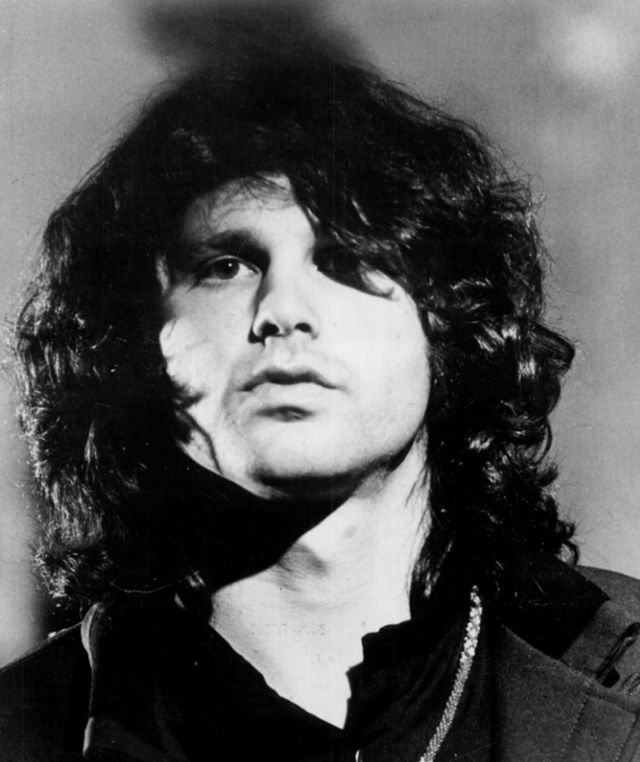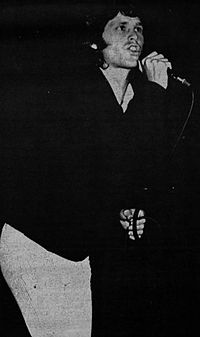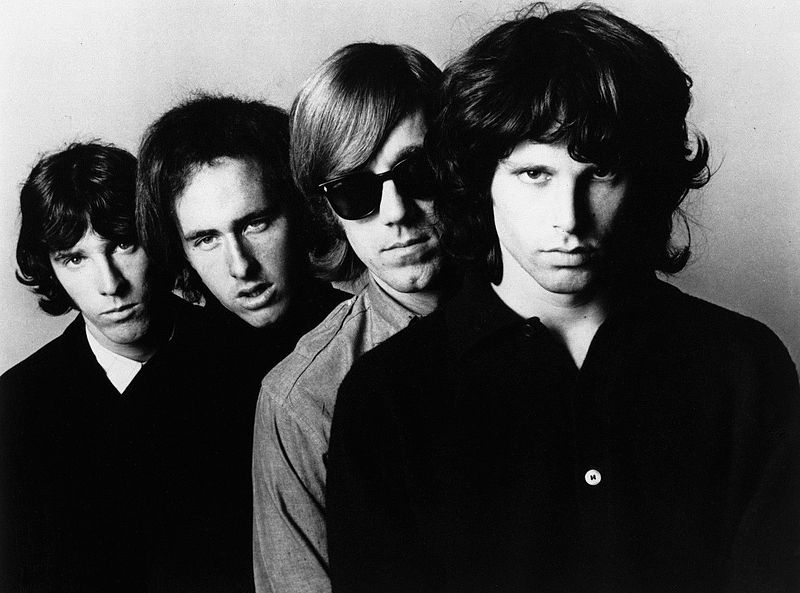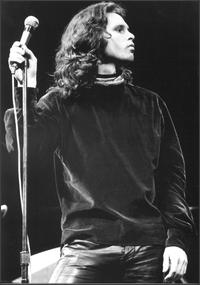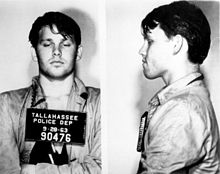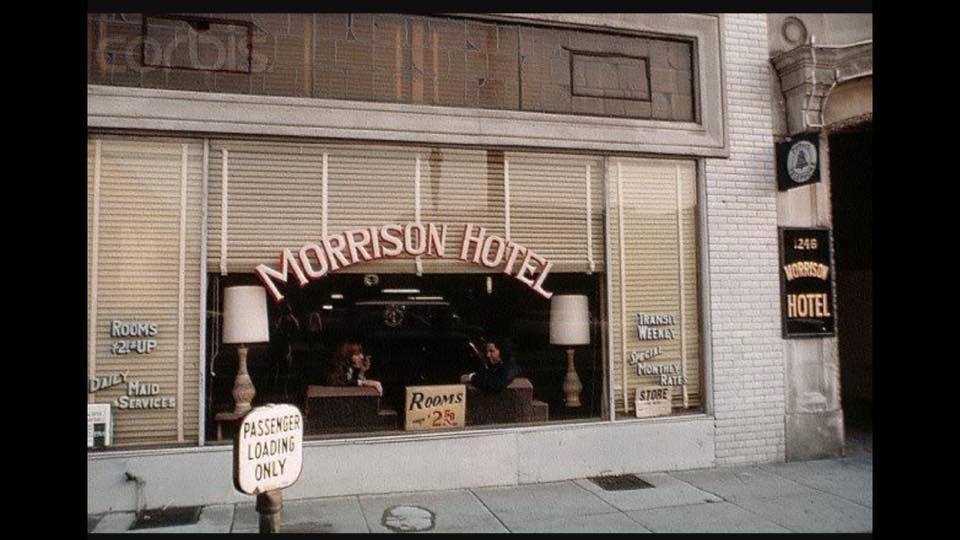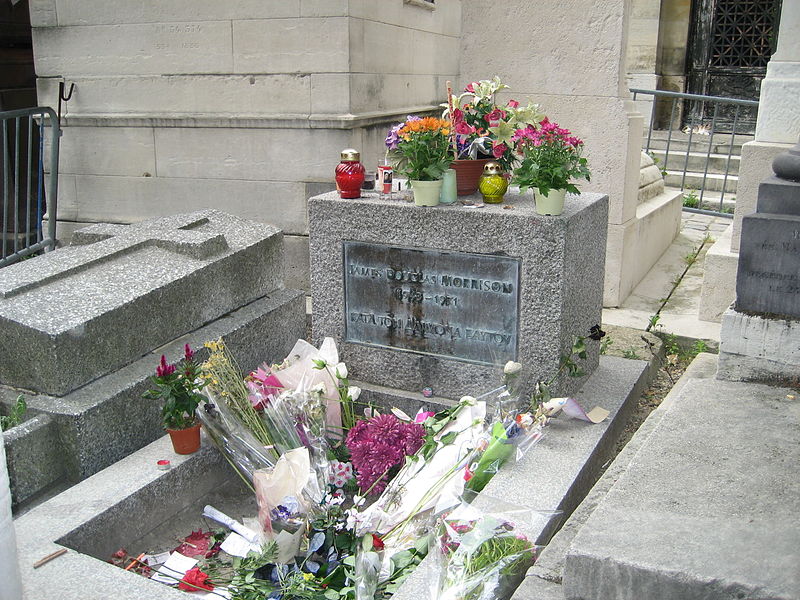James Douglas “Jim” Morrison (December 8, 1943 – July 3, 1971) was an American singer-songwriter and poet, best remembered as the lead singer of The Doors. Morrison was born in Melbourne, Florida, to future Admiral George Stephen Morrison and Clara Clarke Morrison. Morrison had a sister, Anne Robin.
BIOGRAPHICAL DETAILS
Full Name: James Douglas Morrison
Description: Vocalist, USA
Known For: Late lead vocalist of “The Doors”
Instruments: Voice
Music Styles: Rock
Location: United States of America
Date Born: 8th December 1943
Location Born: Melbourne, Florida, United States of America
Date Died: 3rd July 1971
Location Died: Paris, France
Cause Of Death: Ruled as Heart Failure
Memorial: Morrisons was buried in Paris,France. Jim Morrison was aged 27.
Jim Morrison Biography – life, family, childhood, name, death, school …
Jim Morrison (1943 – 1971) – Find A Grave Memorial
Jim Morrison Online – Home | Facebook
Photo Comments: The above image is intended for those who wish to reuse material text and/or graphics from the Wikimedia projects — on their own website, in print, or otherwise. It focuses on Commons as this is explicitly a collection of reusable media.
CONTACT DETAILS
Web Site: http://www.thedoors.com/
YOUTUBE VIDEO
BIOGRAPHICAL PROFILE
Jim Morrison
An American singer, songwriter, poet, writer and film maker. He is best known as the lead singer and lyricist of The Doors and is widely considered to be one of the most charismatic frontmen in rock music history.
From a young age, Morrison became infatuated with the works of Friedrich Nietzsche, Arthur Rimbaud, Jack Kerouac, and William Blake, often incorporating their work into his lyrics. In his later life, Morrison developed an alcohol dependency which led to his death at the age of 27 in Paris. He is alleged to have died of a heroin overdose, but as no autopsy was performed, the exact cause of his death is still disputed. His tomb in Paris is still today a shrine to his personality, visited daily by numerous mourners.
Due to his songwriting, voice, wild personality and performances, he is regarded by critics and fans as one of the most iconic and influential frontmen in rock music history, and, due to the dramatic tinges surrounding his life and death, in the latter part of 20th century he was one of popular culture’s most rebellious and oft-displayed icons, on a par with the likes of Che Guevara, representing generational gap and youth counterculture. He was also well known for improvising spoken word poetry passages while the band played live. Morrison was ranked number 47 on Rolling Stone’s list of the “100 Greatest Singers of All Time”, and number 22 on Classic Rock Magazine’s “50 Greatest Singers In Rock”. Ray Manzarek said that Morrison “embodied hippie counterculture rebellion…” Morrison was also known as the self-proclaimed “Lizard King” and “King of Orgasmic Rock”.
James Douglas Morrison was born in Melbourne, Florida, the son of Clara Virginia (née Clarke) and future Rear Admiral George Stephen Morrison. Morrison had a sister, Anne Robin, who was born in 1947 in Albuquerque, New Mexico; and a brother, Andrew Lee Morrison, who was born in 1948 in Los Altos, California. His ancestors were Scottish, Irish, and English. In 1947, Morrison, then four years old, allegedly witnessed a car accident in the desert, in which a family of Native Americans were injured and possibly killed. He referred to this incident in a spoken word performance on the song “Dawn’s Highway” from the album An American Prayer, and again in the songs “Peace Frog” and “Ghost Song”. Morrison believed this incident to be the most formative event of his life, and made repeated references to it in the imagery in his songs, poems, and interviews. His family does not recall this incident happening in the way he told it. According to the Morrison biography No One Here Gets Out Alive, Morrison’s family did drive past a car accident on an Indian reservation when he was a child, and he was very upset by it. The book The Doors, written by the remaining members of The Doors, explains how different Morrison’s account of the incident was from that of his father. This book quotes his father as saying, “We went by several Indians. It did make an impression on him the young James. He always thought about that crying Indian.” This is contrasted sharply with Morrison’s tale of “Indians scattered all over the highway, bleeding to death.” In the same book, his sister is quoted as saying, “He enjoyed telling that story and exaggerating it. He said he saw a dead Indian by the side of the road, and I don’t even know if that’s true.”
With his father in the United States Navy, Morrison’s family moved often. He spent part of his childhood in San Diego. While his father was stationed at NAS Kingsville, he attended Flato Elementary in Kingsville, Texas. In 1958, Morrison attended Alameda High School in Alameda, California. He graduated from George Washington High School, now George Washington Middle School, in Alexandria, Virginia in June 1961.His father was also stationed at Mayport Naval Air Station in Jacksonville, Florida. Morrison read widely and voraciously—being particularly inspired by the writings of philosophers and poets. He was influenced by Friedrich Nietzsche, whose views on aesthetics, morality, and the Apollonian and Dionysian duality would appear in his conversation, poetry and songs.
He read Plutarch’s “Lives of the Noble Greeks and Romans”. He read the works of the French Symbolist poet Arthur Rimbaud, whose style would later influence the form of Morrison’s short prose poems. He was influenced by Jack Kerouac, Allen Ginsberg, Lawrence Ferlinghetti, Charles Baudelaire, Molière, Franz Kafka, Honoré de Balzac and Jean Cocteau, along with most of the French existentialist philosophers. His senior-year English teacher said, “Jim read as much and probably more than any student in class, but everything he read was so offbeat I had another teacher (who was going to the Library of Congress) check to see if the books Jim was reporting on actually existed. I suspected he was making them up, as they were English books on sixteenth- and seventeenth-century demonology. I’d never heard of them, but they existed, and I’m convinced from the paper he wrote that he read them, and the Library of Congress would’ve been the only source.” Morrison went to live with his paternal grandparents in Clearwater, Florida, where he attended classes at St. Petersburg College (then known as a junior college). In 1962, he transferred to Florida State University (FSU) in Tallahassee, where he appeared in a school recruitment film. While attending FSU, Morrison was arrested for a prank, following a home football game.
In January 1964, Morrison moved to Los Angeles to attend the University of California, Los Angeles (UCLA). Shortly thereafter on August 2, 1964, Morrison’s father, George Stephen Morrison, commanded the United States fleet during the Gulf of Tonkin Incident, which resulted in the United States’ rapid escalation of the Vietnam War. At UCLA, Morrison enrolled in Jack Hirschman’s class on Antonin Artaud in the Comparative Literature program within the UCLA English Department. Artaud’s brand of surrealist theatre had a profound impact on Morrison’s dark poetic sensibility of cinematic theatricality. Morrison completed his undergraduate degree at UCLA’s film school within the Theater Arts department of the College of Fine Arts in 1965. He never went to the graduation ceremony, and had his diploma mailed to him. He made several short films while attending UCLA. First Love, the first of these films, made with Morrison’s classmate and roommate Max Schwartz, was released to the public when it appeared in a documentary about the film Obscura. During these years, while living in Venice Beach, he became friends with writers at the Los Angeles Free Press. Morrison was an advocate of the underground newspaper until his death in 1971. He later conducted a lengthy and in-depth interview with Bob Chorush and Andy Kent, both working for the Free Press at the time (January 1971), and was planning on visiting the headquarters of the busy newspaper shortly before leaving for Paris.
The Doors
In the summer of 1965, after graduating with a degree from the UCLA film school, Morrison led a bohemian lifestyle in Venice Beach. Living on the rooftop of a building inhabited by his old UCLA cinematography friend, Dennis Jakobs, he wrote the lyrics of many of the early songs the Doors would later perform live and record on albums, the most notable being “Moonlight Drive” and “Hello, I Love You”. According to Jakobs, he lived on canned beans and LSD for several months. Morrison and fellow UCLA student, Ray Manzarek, were the first two members of the Doors, forming the group during that summer. They had met months earlier as cinematography students. The now-legendary story claims that Manzarek was lying on the beach at Venice one day, where he accidentally encountered Morrison. He was impressed with Morrison’s poetic lyrics, claiming that they were “rock group” material. Subsequently, drummer John Densmore and guitarist Robby Krieger joined. Krieger auditioned at Densmore’s recommendation and was then added to the lineup. All three musicians shared a common interest in the Maharishi Mahesh Yogi’s meditation practices at the time, attending scheduled classes, but Morrison was not involved in this series of classes, claiming later that he “did not meditate.
The Doors took their name from the title of Aldous Huxley’s book The Doors of Perception a reference to the unlocking of doors of perception through psychedelic drug use. Huxley’s own title was a quotation from William Blake’s The Marriage of Heaven and Hell, in which Blake wrote: “If the doors of perception were cleansed everything would appear to man as it is, infinite.” Although Morrison was known as the lyricist of the group, Krieger also made significant lyrical contributions, writing or co-writing some of the group’s biggest hits, including “Light My Fire”, “Love Me Two Times”, “Love Her Madly”, and “Touch Me”. On the other hand, Morrison, who didn’t write most songs using an instrument, would come up with vocal melodies for his own lyrics, with the other band members contributing chords and rhythm. Morrison did not play an instrument live (except for maracas and tambourine for most shows, and harmonica on a few occasions) or in the studio (excluding maracas, tambourine, handclaps, and whistling). However, he did play the grand piano on “Orange County Suite” and a Moog synthesizer on “Strange Days”.
In June 1966, Morrison and the Doors were the opening act at the Whisky a Go Go in the last week of the residency of Van Morrison’s band Them. Van’s influence on Jim’s developing stage performance was later noted by John Densmore in his book Riders On The Storm: “Jim Morrison learned quickly from his near-namesake’s stagecraft, his apparent recklessness, his air of subdued menace, the way he would improvise poetry to a rock beat, even his habit of crouching down by the bass drum during instrumental breaks.” On the final night, the two Morrisons and their two bands jammed together on “Gloria”. In November 1966, Morrison and the Doors produced a promotional film for “Break on Through (To the Other Side)”, which was their first single release. The film featured the four members of the group playing the song on a darkened set with alternating views and close-ups of the performers while Morrison lip-synched the lyrics. Morrison and the Doors continued to make short music films, including “The Unknown Soldier”, “Moonlight Drive”, and “People Are Strange”.
The Doors achieved national recognition after signing with Elektra Records in 1967. The single “Light My Fire” spent three weeks at number one on the Billboard Hot 100 chart in July/August 1967. Later, the Doors appeared on The Ed Sullivan Show, a popular Sunday night variety series that had introduced the Beatles and Elvis Presley to the United States. Ed Sullivan requested two songs from the Doors for the show, “People Are Strange” and “Light My Fire”. Sullivan’s censors insisted that the Doors change the lyrics of the song “Light My Fire” from “Girl we couldn’t get much higher” to “Girl we couldn’t get much better” for the television viewers; this was reportedly due to what was perceived as a reference to drugs in the original lyrics. After giving assurances of compliance to the producer in the dressing room, Morrison told the band “we’re not changing a word” and proceeded to sing the song with the original lyrics. Sullivan was not happy and he refused to shake hands with Morrison or any other band member after their performance. He had a show producer tell the band that they would never appear on The Ed Sullivan Show again. Morrison reportedly said to the producer, in a defiant tone, “Hey man. We just ‘did’ the Sullivan Show!”
By the release of their second album, Strange Days, the Doors had become one of the most popular rock bands in the United States. Their blend of blues and dark rock tinged with psychedelia included a number of original songs and distinctive cover versions, such as their rendition of “Alabama Song”, from Bertolt Brecht and Kurt Weill’s opera, Rise and Fall of the City of Mahagonny. The band also performed a number of extended concept works, including the songs “The End”, “When the Music’s Over”, and “Celebration of the Lizard”. In 1966, photographer Joel Brodsky took a series of black-and-white photos of Morrison, in a photo shoot known as “The Young Lion” photo session. These photographs are considered among the most iconic images of Jim Morrison and are frequently used as covers for compilation albums, books, and other memorabilia of the Doors and Morrison. In late 1967 at an infamous concert in New Haven, Connecticut, he became the first rock singer ever to get arrested on stage, an incident that further added to his mystique and emphasized his rebellious image.
In 1968, the Doors released their third studio album, Waiting for the Sun. The band performed on July 5 at the Hollywood Bowl, this performance became famous with the DVD: Live at the Hollywood Bowl. It’s also this year that the band played, for the first time, in Europe. Their fourth album, The Soft Parade, was released in 1969. It was the first album where the individual band members were given credit on the inner sleeve for the songs they had written. Previously, each song on their albums had been credited simply to “The Doors”. On September 6 and 7, 1968, the Doors played four performances at The Roundhouse, London, England with Jefferson Airplane which were filmed by Granada for a television documentary “The Doors are Open” directed by John Sheppard. Around this time, Morrison—who had long been a heavy drinker—started showing up for recording sessions visibly inebriated. He was also frequently late for live performances. As a result, the band would play instrumental music or force Manzarek to take on the singing duties to subdue the impatient audience.
By March 1969, the formerly svelte singer had gained weight, grown a beard and mustache, and had begun dressing more casually—abandoning the leather pants and concho belts for slacks, jeans and T-shirts. During a March 1, 1969 concert at the Dinner Key Auditorium in Miami, Morrison attempted to spark a riot in the audience. He failed, but a warrant for his arrest was issued by the Dade County Police department three days later for indecent exposure. Consequently, many of The Doors’ scheduled concerts were canceled. In September 1970, Morrison was convicted of indecent exposure and profanity. Morrison, who attended the sentencing “in a wool jacket adorned with Indian designs”, silently listened as he was sentenced for six months in prison and had to pay a $500 fine. Morrison remained free on a $50,000 bond. At the sentencing, Judge Murray Goodman told Morrison that he was a “person graced with a talent” admired by many of his peers.
In 2007 Florida Governor Charlie Crist suggested the possibility of a posthumous pardon for Morrison, which was announced as successful on December 9, 2010. Drummer John Densmore denied Morrison ever exposed himself on stage that night.
Following The Soft Parade, The Doors released Morrison Hotel. After a lengthy break the group reconvened in October 1970 to record what would become their final album with Morrison, titled L.A. Woman. Shortly after the recording sessions for the album began, producer Paul A. Rothchild—who had overseen all of their previous recordings—left the project. Engineer Bruce Botnick took over as producer.
Personal life
Morrison’s early life was a nomadic existence typical of military families.Jerry Hopkins recorded Morrison’s brother, Andy, explaining that his parents had determined never to use physical corporal punishment such as spanking on their children. They instead instilled discipline and levied punishment by the military tradition known as dressing down. This consisted of yelling at and berating the children until they were reduced to tears and acknowledged their failings. Once Morrison graduated from UCLA, he broke off most contact with his family. By the time Morrison’s music ascended to the top of the charts (in 1967) he had not been in communication with his family for more than a year and falsely claimed that his parents and siblings were dead (or claiming, as it has been widely misreported, that he was an only child).
This misinformation was published as part of the materials distributed with The Doors’ self-titled debut album. George Morrison was not supportive of his son’s career choice in music. One day, an acquaintance brought over a record thought to have Jim on the cover. The record was The Doors’ self-titled debut. The young man played the record for Morrison’s father and family. Upon hearing the record, Morrison’s father wrote him a letter telling him “to give up any idea of singing or any connection with a music group because of what I consider to be a complete lack of talent in this direction.” In a letter to the Florida Probation and Parole Commission District Office dated October 2, 1970, Morrison’s father acknowledged the breakdown in family communications as the result of an argument over his assessment of his son’s musical talents. He said he could not blame his son for being reluctant to initiate contact and that he was proud of him nonetheless.
Relationships
Morrison met his long-term companion, Pamela Courson, well before he gained any fame or fortune, and she encouraged him to develop his poetry. At times, Courson used the surname “Morrison” with his apparent consent or at least lack of concern. After Courson’s death on April 25, 1974, the probate court in California decided that she and Morrison had what qualified as a common-law marriage. Morrison and Courson’s relationship was a stormy one, with frequent loud arguments and periods of separation. Biographer Danny Sugerman surmised that part of their difficulties may have stemmed from a conflict between their respective commitments to an open relationship and the consequences of living in such a relationship.
In 1970, Morrison participated in a Celtic Pagan handfasting ceremony with rock critic and science fiction/fantasy author Patricia Kennealy. Before witnesses, one of them a Presbyterian minister the couple signed a document declaring themselves wed, but none of the necessary paperwork for a legal marriage was filed with the state. Kennealy discussed her experiences with Morrison in her autobiography Strange Days: My Life With and Without Jim Morrison and in an interview reported in the book Rock Wives.
Morrison also reportedly regularly had sex with fans “groupies” such as Josépha Karcz who wrote a novel about their night together, and had numerous short flings with females connected with the music business or the print media. They included Nico, the singer associated with The Velvet Underground, a one night stand with singer Grace Slick of Jefferson Airplane, an on-again, off-again relationship with 16 Magazine’s Gloria Stavers as well as an alleged alcohol-fueled encounter with Janis Joplin. David Crosby said many years later Morrison treated Joplin poorly at a party at the home of John Davidson while Davidson was out of town. She allegedly attacked him with a bottle of booze in front of witnesses, and that ended their only encounter. At the time of his death there were at least three paternity actions pending against him,[46] although no claims were made against his estate by any of the putative paternity claimants.
Above; Photo by Harry Brus
Death
Morrison joined Courson in Paris in March 1971. They took up residence in the city in a rented apartment on the rue Beautreillis (in the 4th arrondissement of Paris on the Right Bank), and went for long walks throughout the city, admiring the city’s architecture. During this time, Morrison shaved his beard and lost some of the weight he had gained in the previous months. Morrison died on July 3, 1971 at age 27. In the official account of his death, he was found in a Paris apartment bathtub (at 17–19 rue Beautreillis, 4th arrondissement) by Courson. Pursuant to French law, no autopsy was performed because the medical examiner stated that there was no evidence of foul play. The absence of an official autopsy has left many questions regarding Morrison’s cause of death. In Wonderland Avenue, Danny Sugerman discussed his encounter with Courson after she returned to the United States. According to Sugerman’s account, Courson stated that Morrison had died of a heroin overdose, having inhaled what he believed to be cocaine. Sugerman added that Courson had given him numerous contradictory versions of Morrison’s death, saying at times that she had killed Morrison, or that his death was her fault. Courson’s story of Morrison’s unintentional ingestion of heroin, followed by his accidental overdose, is supported by the confession of Alain Ronay, who has written that Morrison died of a hemorrhage after snorting Courson’s heroin, and that Courson nodded off instead of phoning for medical help, leaving Morrison bleeding to death.
Ronay confessed in an article in Paris that he then helped cover up the circumstances of Morrison’s death.In the epilogue of No One Here Gets Out Alive, Hopkins and Sugerman write that Ronay and Agnès Varda say Courson lied to the police who responded to the death scene, and later in her deposition, telling them Morrison never took drugs. In the epilogue to No One Here Gets Out Alive, Hopkins says that 20 years after Morrison’s death, Ronay and Varda broke their silence and gave this account: They arrived at the house shortly after Morrison’s death and Courson said that she and Morrison had taken heroin after a night of drinking. Morrison had been coughing badly, had gone to take a bath, and vomited blood. Courson said that he appeared to recover and that she then went to sleep. When she awoke sometime later Morrison was unresponsive, so she called for medical assistance. Hopkins and Sugerman also claim that Morrison had asthma and was suffering from a respiratory condition involving a chronic cough and vomiting blood on the night of his death. This theory is partially supported in The Doors (written by the remaining members of the band) in which they claim Morrison had been coughing up blood for nearly two months in Paris, but none of the members of The Doors were in Paris with Morrison in the months prior to his death. According to a Madame Colinette, who was at the cemetery that day mourning the recent loss of her husband, she witnessed Morrison’s funeral at Père Lachaise Cemetery.The ceremony was “pitiful,” with several of the attendants muttering a few words, throwing flowers over the casket, then leaving quickly and hastily within minutes as if their lives depended upon it. Those who attended included Alain Ronay, Agnès Varda, Bill Siddons manager, Courson, and Robin Wertle (Morrison’s Canadian private secretary at the time for a few months). In the first version of No One Here Gets Out Alive, published in 1980, Sugerman and Hopkins gave some credence to the rumor that Morrison may not have died at all, calling the fake death theory “not as far-fetched as it might seem”. This theory led to considerable distress for Morrison’s loved ones over the years, notably when fans would stalk them, searching for evidence of Morrison’s whereabouts.
In 1995, a new epilogue was added to Sugerman’s and Hopkins’s book, giving new facts about Morrison’s death and discounting the fake death theory saying, “As time passed, some of Jim and Pamela Courson’s friends began to talk about what they knew, and although everything they said pointed irrefutably to Jim’s demise, there remained and probably always will be those who refuse to believe that Jim is dead and those who will not allow him to rest in peace.” In July 2007, Sam Bernett, a former manager of the Rock ‘n’ Roll Circus nightclub, released a (French) book titled “The End: Jim Morrison”. In it Bernett alleges that instead of dying of a heart attack in a bathtub (the official police version of his death), Morrison overdosed on heroin on a toilet seat in the nightclub. He claims that Morrison came to the club to buy heroin for Courson then used some himself and died in the bathroom. Morrison’s body was then moved back to his rue Beautreillis apartment and dumped into the bathtub by the two drug dealers from whom Morrison had purchased the heroin. Bernett says those who saw Morrison that night were sworn to secrecy in order to prevent a scandal for the famous club, and that some of the witnesses immediately left the country. There have been many other conspiracy theories surrounding Morrison’s death but are less supported by witnesses than are the accounts of Ronay and Courson.
In the August 1, 2014 issue of Mojo Magazine, Marianne Faithfull says that her drug-dealer boyfriend at the time, Jean de Breiteuil, killed Morrison. In the interview she says, “I could intuitively feel trouble. I thought, I’ll take a few Tuinal and I won’t be there. And he went to see Jim Morrison and killed him. I mean I’m sure it was an accident. Poor bastard. The smack was too strong? Yeah. And he died. And I didn’t know anything about this. Anyway, everybody connected to the death of this poor guy is dead now. Except me.”
Morrison is buried in Père Lachaise Cemetery in Paris, one of the city’s most visited tourist attractions. The grave had no official marker until French officials placed a shield over it, which was stolen in 1973. Initially, the grave was unmarked, and listed in the cemetery directory with Morrison’s name incorrectly rearranged as “Douglas James Morrison.” In 1981, Croatian sculptor Mladen Mikulin voluntarily placed a bust of his own design and a new gravestone with Morrison’s name at the grave to commemorate the 10th anniversary of his death; the bust was defaced through the years by cemetery vandals and later stolen in 1988. Mikulin made another bust of Morrison in 1989, and a bronze portrait of him in 2001; neither piece is at the gravesite. In the early 1990s Morrison’s father George Stephen Morrison, after consulting with E. Nicholas Genovese, Professor of Classics and Humanities, San Diego State University, placed a flat stone on the grave. The bronze plaque thereon bears the Greek inscription: ΚΑΤΑ ΤΟΝ ΔΑΙΜΟΝΑ ΕΑΥΤΟΥ, literally meaning “according to own self-daemon, i.e., guiding spirit,” to convey the sentiment “True to Himself.”
From Wikipedia, the free encyclopedia

